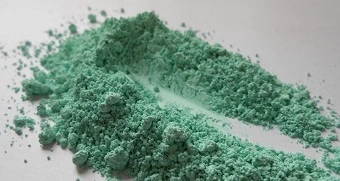Ensuring Crop Health: The Impact of Copper Oxychloride on Plant Vitality
20 Nov 2024 • by Natalie Aster

Copper oxychloride is a vital fungicide that has proven essential for maintaining the health and productivity of crops. It is widely used in both conventional and organic farming to combat fungal pathogens that could otherwise devastate crops, ensuring that plants not only survive but thrive in diverse environmental conditions. Its effectiveness stems from its ability to disrupt fungal cells, halting their growth and spread. When applied correctly, copper oxychloride serves as a preventive measure against many common fungal diseases, enhancing plant vitality and overall crop health.
Understanding the application and impact of copper oxychloride can empower farmers and agricultural specialists to make informed decisions that foster robust crop growth and sustainable yields.
Key Benefits of Using Copper Oxychloride:
Broad-Spectrum Disease Control
Copper oxychloride has a wide range of applications, making it suitable for use on many types of crops. This versatility allows farmers to use it as a single solution to combat multiple fungal diseases, which simplifies disease management and enhances efficiency.
Boosts Crop Yield and Quality
By controlling fungal infections early and effectively, copper oxychloride supports healthier plants that can focus their energy on growth and fruiting rather than on fighting off disease. This directly correlates with higher yields and improved quality of produce, benefiting both commercial and small-scale farmers.
Proven Efficacy in Diverse Conditions
Copper oxychloride remains effective in different climates and conditions, giving it an edge over some other fungicides that may require specific temperature or humidity levels to work properly. This adaptability ensures consistent results, even in challenging environmental settings.
Common Diseases Managed by Copper Oxychloride:
Downy Mildew
One of the most prevalent and damaging fungal diseases, downy mildew affects crops such as grapes, lettuce, and cucumbers. Copper oxychloride’s ability to disrupt the life cycle of this pathogen makes it an invaluable tool for farmers who need to maintain healthy vineyards and vegetable gardens.
Leaf Spot Diseases
Copper oxychloride effectively manages leaf spot diseases, which can cause defoliation and weaken plants. By forming a barrier that stops the spread of fungal spores, copper oxychloride helps maintain foliage health, critical for photosynthesis and growth.
Anthracnose
Anthracnose can devastate fruits and vegetables, leaving behind sunken, discolored lesions. Copper oxychloride’s protective action helps prevent the onset of this disease, ensuring that crops mature without blemishes and reach their market potential.
Final Thoughts
Copper oxychloride stands as a reliable ally for farmers aiming to maintain crop health and maximize yield. Its broad-spectrum fungicidal action, coupled with its ability to provide lasting protection, makes it an essential component in modern agricultural practices. When used according to best practices, copper oxychloride can significantly contribute to the vitality and resilience of crops, supporting sustainable food production for communities worldwide.
Product Details:
Copper oxychloride (CAS 1332-65-6) Market Research Report 2024
Published: November 2024
Pages: 72
Market Publishers boasts a rich collection of insightful research studies covering the chemicals and petrochemicals market, find it in the Chemicals & Petrochemicals Market Reports Catalogue.
CONTACTS
The Market Publishers, Ltd.
Natalie Aster
Tel: +357 96 030922
[email protected]
MarketPublishers.com
Analytics & News
